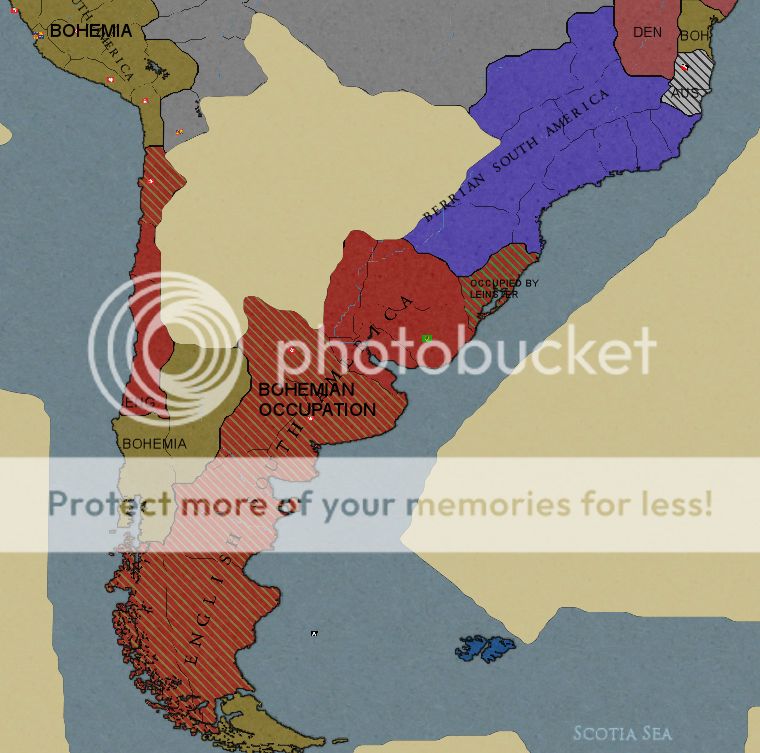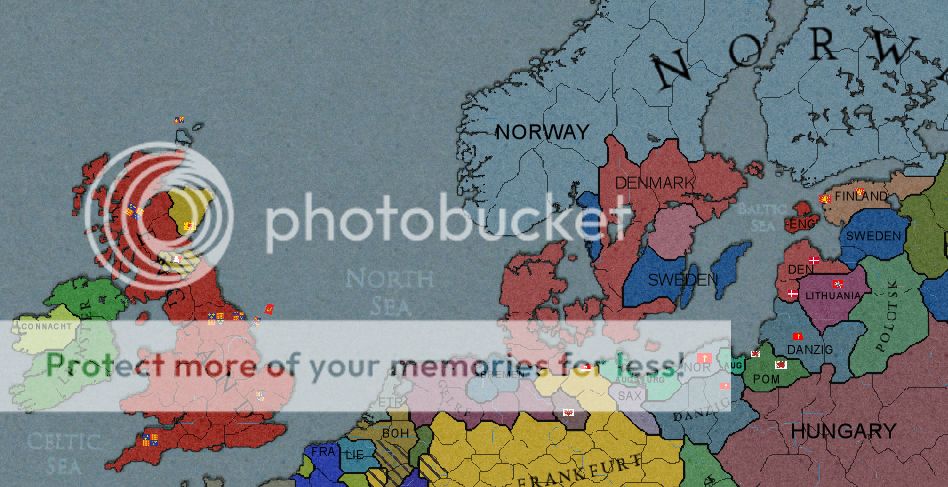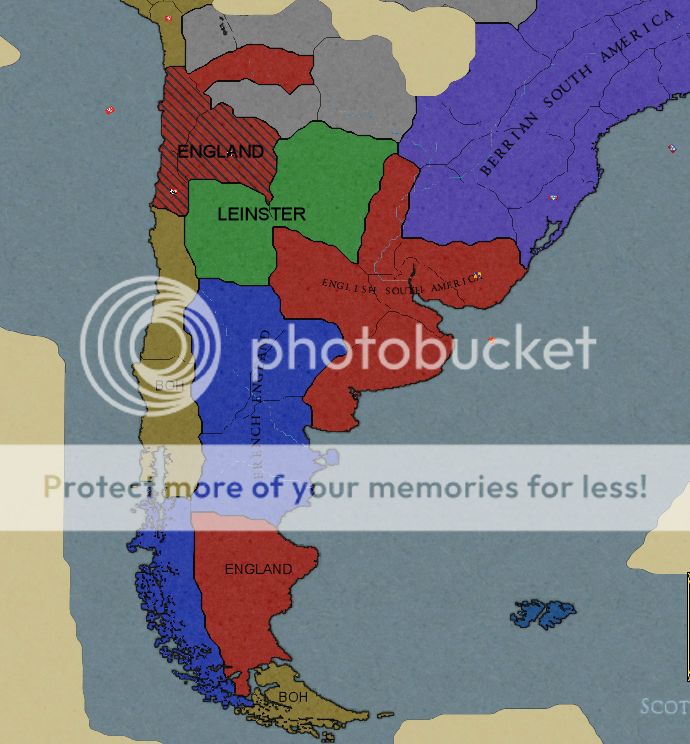Hmm, it looks like this will be post 666 in this thread. Interesting.
Anyway, on topic. I made you a table of contents...
Crusader Kings 2
pg. 1
CHAPTER ONE: THE RISE AND FALL OF NORMAN ENGLAND 1066-1085
CHAPTER TWO: TURKISH TURMOIL, 1070-1080
CHAPTER THREE: THE FATIMID JIHADS AND THE FIRST CRUSADE (1076-1095)
CHAPTER FOUR: NORWAY AND THE NORTHERN CRUSADE, 1071-1128
pg. 2
ALL IN THE FAMILY? THE RISE OF RUS, 1069-1089
THE CHARSIANON CRISIS AND THE SICILIAN CRUSADE, 1117-1130
The Return of Al-Andalus, 1114-1133
THE PECHENEG CAMPAIGN AND THE WAR OF THE WOMEN, (1121-1146)
1143 maps
pg. 3
THE PREMYSLID DECLINE: POLAND, 1137-1159
THE BIRTH OF IRELAND, 1122-1170
THE RISE OF THE HAMMADIDS, 1139-1167
THE 2ND JERUSALEM CRUSADE AND THE FATIMID CIVIL WAR (1159-1174)
THE FALL OF BRITTANY, 1168-1181
AN ELEGY FOR ABYSSINNIA, 1175-1183.
pg. 4
THE EMPIRE STRIKES BACK, 1145-1206
THE GENOVESE MUSLIMS AND THE ITALIAN HOLY WARS 1189-1207
THE DIVISION OF NORWAY AND THE WARS THAT FOLLOWED, 1191-1218
THE DANES IN SPAIN REIGN MAINLY ON THE PLAIN, 1198-1213
ARNULF THE TERRIBLE AND THE FRENCH CIVIL WARS, 1204-1217
1220 maps
pg. 5
MAURICE THE CRUEL AND THE ENGLISH CIVIL WAR, 1217-1233.
pg. 6
THE MONGOLS ARE COMING: IL KHANATE, 1216-1247
MORE MONGOL MADNESS: THE GOLDEN HORDE, 1231-1262
KAISER CARLO’S CHAOS: THE HOLY ROMAN EMPIRE, 1249-1268.
BASQUING IN SUNNY SPAIN: THE RISE OF NAVARRA, 1221-1278
pg. 7
A MUIREBE MURDER MYSTERY AND A DREAM OF UNIFIED BRITAIN, 1257-1294
A MONGOL MAELSTROM AND A FLIRTATION WITH ORTHODOXY, 1274-1298
1297 maps
pg. 8 [Switch to 1.07]
HUNGARIAN EXPANSION, 1291-1321
DECADENCE, DECLINE AND DIVISION IN SELJUK PERSIA, 1290-1331
RISING MARATIME POWERS OF THE WESTERN MEDITERRANEAN: SARDINIA AND NAVARRA, 1301-1348.
pg. 9
THE FALL OF THE FATIMIDS, 1339-1351
GAUCELIN THE CRUEL AND FRENCH SUPREMACY, 1341-1363
THE DISINTEGRATION OF THE GOLDEN HORDE, 1350-1379
1375 maps
pg. 10
A NEW ROMAN GOLDEN AGE: BYZANTIUM 1377-1403
pg. 11
TIMURID TIME: TIMUR AND MUNGLIG, 1377-1403
THE COLLAPSE OF MUSLIM NORTH AFRICA, 1365-1420
KING EDMUND THE JUST AND THE SCOTTISH CIVIL WARS – 1376-1409
pg. 12
REBELLIONS AND SUCCESSION CRISES AND HOLY WARS, OH MY! – THE HRE, 1379-1409
PAVEL THE BOLD AND THE POLISH SUCCESSION WARS, 1382-1429
THE ENGLISH REVOLT AND OTHER FRENCH FRACASES, 1415-1443
pg. 13
UNREST IN THE EAST: BYZANTIUM AND THE TIMURIDS, 1422-1450
THE PAPAL PRONOUNCEMENT OF 1452
1452 maps
Europa Universalis 3
pg. 1
Northwestern Europe
Northeastern Europe
Eastern Mediterranean and Middle East
pg. 2
Western Mediterranean
HRE map
1455 Stats
pg. 3
THE WESTERN MEDITERRANEAN, 1453-1483.
THE BRITISH ISLES, 1462-1489.
pg. 4
THE MIDDLE EAST, 1453-1498
THE HINDU RECONQUISTA, 1455-1476.
pg. 5
East Asia, 1453-1480.
NORTH AMERICA, 1463-1480
SWEDEN, 1486-1493
CENTRAL EUROPE AND THE REFORMATION, 1486-1512
pg. 6
EASTERN EUROPE, 1478-1514.
ITALY 1496-1525
WEST AFRICA, 1465-1519
pg. 8
CENTRAL ASIA 1488-1521
THE WORLD, 1518
pg. 9
THE FRENCH EXCOMMUNICATION WARS AND ‘LA TOURMENTE’, 1503-1586.
pg. 11
CENTRAL EUROPE 1513-1546
pg. 12
EASTERN EUROPE, 1525-1549
pg. 13
WESTERN MEDITERRANEAN, 1527-1568
THE FALL OF SWAHILI, 1533-1558.
pg. 14
India, 1499-1548.
pg. 16
SOUTHEAST ASIA, 1512-1571.
THE RISE OF SHAWNEE, 1542-1577.
THE HUNDRED YEARS WAR AND THE FALL OF THE MONGOLS, 1503-1625
pg. 17
1581 maps and stats
THE VOYAGES OF GODOFREDO DE YANGUAS AND THE NEW WORLD, 1574-1591
pg. 18
CENTRAL AND EASTERN EUROPE, 1569-1622
pg. 19
WESTERN MEDITERRANEAN, 1574-1626.
pg. 20
FOREIGNERS IN AFRICA, 1609-1616.
pg. 21
THE NEW WORLD, 1597-1648
pg. 23
SOUTHEAST ASIA, 1576-1607
pg. 24
INDIA, 1584-1644
BYZANTIUM, 1625-1647.
pg. 25
EUROPEANS IN WEST AFRICA, 1630-1652.
pg. 26
1645 maps and stats
pg. 27
CENTRAL EUROPE, 1634-1668
THE NEW WORLD, 1646-1678.
pg. 28
EAST AFRICA, 1650-1681
BYZANTINE CONSOLIDATION AND THE PUNITIVE WARS, 1648-1695
pg. 29
EAST ASIA 1632-1669
THE VOYAGE OF ALBERT SUFFOLK, 1694-1696
pg. 30
CENTRAL EUROPE, 1685-1695
pg. 31
West Africa 1654-1700
THE FALL OF MESOAMERICA (1674-1709)
pg. 32
NORTH AMERICA, 1683-1708
pg. 33
BYZANTIUM, 1696-1709.
1706 maps and stats




